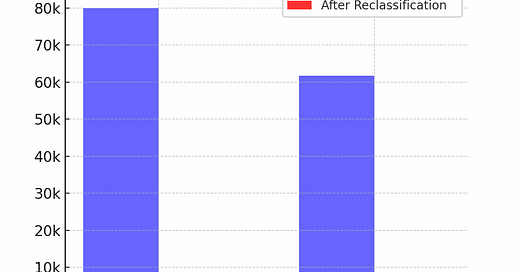When Everyone "Wins" But Nothing Changes: Will Rogers Phenomenon Explained
How a Simple Shift Can Make Both Sides of the Equation Look Better
Imagine a world where simply moving from one place to another could make everyone seem smarter. Sounds like magic, right? Well, that's the essence of the Will Rogers Phenomenon, a statistical quirk named after the legendary humorist Will Rogers.
Will Rogers: The Man Behind the Phenomenon
Will Rogers was a renowned American humorist, actor, and social commentator in the early 20th century. Known for his sharp wit and folksy wisdom, he once quipped, "When the Okies left Oklahoma and moved to California, they raised the average intelligence level in both states." This jest highlighted a curious statistical effect that would later bear his name.
Breaking Down the Phenomenon
At its core, the Will Rogers Phenomenon occurs when transferring an element from one group to another increases the average value of both groups. It's like a magic trick with numbers, but without the smoke and mirrors. Let's explore the Will Rogers Phenomenon through a real-life scenario involving employee performance within a company.
Before Classification:
Consider a company with two departments:
Department A: Employees with the following annual sales figures:
Alice: $70k
Bob: $80k
Charlie: $90k
Average Sales in Department A:
Department B: Employees with these annual sales figures:
David: $40k
Eve: $50k
Frank: $95k
Average Sales in Department B:
After Reclassification:
The management decides to reassign Alice from Department A to Department B which will impact the department averages as following:
Department A:
Bob: $80k
Charlie: $90k
Average Sales in Department A:
Department B:
David: $40k
Eve: $50k
Frank: $95k
Alice: $70k
Average Sales in Department B:
Observation:
After transferring Alice:
Department A's average sales increased from $80k to $85k.
Department B's average sales increased from approximately $61.7k to $63.8k
This example illustrates the Will Rogers Phenomenon, where moving an individual from one group to another can raise the average performance metrics of both groups, even though the individual's performance remains the same. Understanding this phenomenon is crucial for managers and analysts to avoid misinterpreting data when making decisions based on group averages.
Real-World Implications
The Will Rogers Phenomenon isn't just a mathematical oddity—it has real-world consequences in various fields, often leading to misleading interpretations of progress. Below are some key examples:
Medicine: Improved diagnostics reclassify early-stage patients from "healthy" to "ill," raising survival rates in both groups. The healthy group loses hidden cases, and the ill group gains better-prognosis patients, creating an illusion of improved outcomes
Education: Reclassifying students between different performance tiers can alter the average scores of both groups without any actual change in individual performances.
Economics: Shifting companies between different market categories can affect the perceived average performance metrics of each category.
Avoiding the Statistical Trap
To ensure you're not bamboozled by this phenomenon:
Be Wary of Reclassification: Recognize that moving elements between groups can artificially alter group statistics.
Focus on Individual Data: Analyze individual data points and their changes over time, rather than solely relying on group averages.
Consider External Factors: Account for factors such as advancements in technology or changes in classification criteria that might influence group compositions.
By understanding the Will Rogers Phenomenon, you can better interpret data and avoid being misled by statistical illusions. After all, as Will Rogers might say, "It's not what we don't know that gets us in trouble; it's what we know that ain't so."








